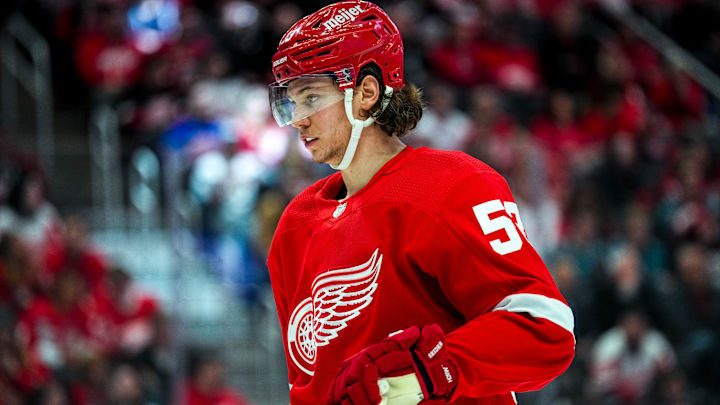Stats don't always paint the whole picture.
While there are aspects of the statistics that accurately describe Seider’s game from my viewing, there are aspects that aren’t accounted for in Seider’s game.
As an example, Seider held Connor McDavid to a two-point game on January 11, 2024. Also, he held his countryman, Leon Draisaitl, off the scoresheet entirely. It may have been an overtime loss for Detroit, but was a big game for Seider.
From a Red Wings fan perspective, Seider performed excellently. Whenever McDavid entered the Red Wings’ zone, he faced a brick wall that bit back every shift. Much like Auston Matthews of the Toronto Maple Leafs, illustrated in this video, McDavid seemed frustrated as not a lot went his way with Seider on the ice.
At the same time, Seider didn’t drive play. He was effective with being reactionary. I could see non-Red Wings’ fans having a different reaction to this style of play.
What seems to be lost on those fans is that Seider played over 25 minutes, the most on either team. More often than not those shifts were against McDavid, who logged over 23 minutes in the game.
I can’t fathom asking Seider for more effort, skill, or productivity in a game against McDavid, but I suppose I understand an outsider’s mentality in that sense.
Certain stats reflect Seider positively with some people, like Byron Bader, getting Seider’s impact:
We have a star to announce!
— Byron Bader (@ByronMBader) January 2, 2024
Mo Seider is officially there, becoming the 2nd star from the 2019 class.
I was dead wrong about him. Thought Detroit was nuts taking him that early in 2019.
He's been great since his very first NHL game.
There has been 831 dmen drafted with a… pic.twitter.com/ofh4IFMcbg
Then, there is the Grind Line Podcast that points out:
Moritz Seider is ranked 4th in the league in "Puck Battles Won" for the year of 2023.#LGRW #RedWings pic.twitter.com/eQYUD5Uw6Q
— The Grind Line Podcast™ (@GrindLinePod) December 30, 2023
In reality, statistics aren’t everything and can’t tell the whole story.
As important as the statistic is, things like how it’s derived, the things it accounts for, the things it doesn’t account for, definition of its measurements, any possible variables, and so on. Practically anyone can create a stat to support their claims, but it doesn’t make that stat effective or helpful.
